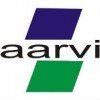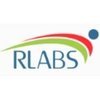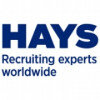Filter interviews by
Aarvi Encon Interview Questions and Answers
65 Interview questions
Document sharing involves the systematic distribution and access of documents among stakeholders to ensure collaboration and efficiency.
Identify Stakeholders: Determine who needs access to the documents, such as team members, clients, or regulatory bodies.
Choose a Platform: Use document management systems (e.g., SharePoint, Google Drive) for secure and organized sharing.
Set Permissions: Define access levels (view,...
A GFC drawing is a finalized construction document that provides detailed instructions for building a project accurately.
Finalized Design: GFC drawings represent the final design approved by all stakeholders, ensuring that construction follows the intended plans.
Construction Details: They include specific details such as dimensions, materials, and installation methods necessary for accurate construction.
Regulatory...
Safety is crucial on construction sites to protect workers, ensure project efficiency, and comply with regulations.
Prevents accidents: Proper safety measures reduce the risk of falls, which are a leading cause of injuries on construction sites.
Protects workers' health: Use of personal protective equipment (PPE) like helmets and gloves safeguards against hazards.
Enhances productivity: A safe work environment leads ...
Safety involves practices and measures to prevent accidents and injuries in various environments, ensuring well-being and compliance.
Safety protocols include regular training and drills, such as fire drills in workplaces.
Personal Protective Equipment (PPE) is essential, like helmets and gloves in construction.
Risk assessments help identify hazards, for example, evaluating chemical exposure in labs.
Emergency respon...
Pre-Engineering Buildings (PEB) are prefabricated structures designed for quick assembly and cost efficiency.
PEB structures are made from steel and are designed for rapid construction.
They are commonly used for warehouses, factories, and commercial buildings.
PEB systems allow for flexibility in design and can be customized to meet specific needs.
Examples include sports complexes, aircraft hangars, and retail store...
Quality of construction is ensured through inspections, material testing, adherence to standards, and continuous monitoring.
Conduct regular site inspections to ensure compliance with design specifications.
Perform material tests, such as concrete slump tests, to verify quality.
Review and adhere to building codes and standards relevant to the project.
Implement a quality management system to document and address issu...
Pipes in PV solar plants are primarily used for fluid transport, often made of PVC, CPVC, or HDPE for durability and efficiency.
PVC pipes are commonly used for water transport in cooling systems.
CPVC pipes can handle higher temperatures, suitable for thermal applications.
HDPE pipes are used for underground installations due to their resistance to corrosion.
Stainless steel pipes may be used for high-pressure applic...
Hydro testing is a procedure to verify the integrity of pressure vessels using water under pressure.
1. Prepare the system: Ensure all components are clean and free of debris.
2. Fill with water: Use clean water to fill the system, avoiding air pockets.
3. Pressurize: Gradually increase the pressure to the specified test pressure, typically 1.5 times the design pressure.
4. Monitor: Check for leaks and monitor pressur...
Transmitter calibration ensures accurate measurement by adjusting the output signal to match the input signal.
Calibration involves comparing the output of the transmitter to a known input signal and making adjustments as needed.
Use calibration equipment such as a signal generator and multimeter to perform the calibration.
Follow manufacturer's instructions and guidelines for proper calibration procedures.
Document t...
Daily routine in construction involves quality checks and technical development.
Inspecting materials and workmanship for quality control
Ensuring compliance with building codes and regulations
Implementing and monitoring safety protocols
Collaborating with engineers and architects for technical development
Training and mentoring staff on new construction techniques
Aarvi Encon Interview Experiences
69 interviews found
I applied via Naukri.com and was interviewed in Nov 2024. There were 5 interview rounds.

(2 Questions)
- Q1. Heat exchanger related
- Q2. Vessels and column related
(2 Questions)
- Q1. Hot work and fabrication job related
- Q2. Plants maintenance related
(2 Questions)
- Q1. Qualification related
- Q2. Resume related
(2 Questions)
- Q1. About salary in that company
- Q2. Salary discussion
Interview Preparation Tips
- Industrial engineering sestam
- Stranth of materials
I appeared for an interview in Dec 2024, where I was asked the following questions.
- Q1. Why is SF6 Breaker
- Ans.
SF6 breakers use sulfur hexafluoride gas for insulation and arc-extinguishing, providing efficient and reliable performance in electrical systems.
SF6 (sulfur hexafluoride) is an excellent insulator, allowing for compact designs in substations.
It has a high dielectric strength, which means it can withstand high voltages without breaking down.
SF6 breakers are effective in interrupting electrical arcs, making them suitabl...
- Q2. Transmission line used in Star and Delta
- Ans.
Star and Delta configurations are used in electrical transmission lines to manage voltage and current effectively.
Star (Y) configuration connects one end of each phase to a common point, reducing voltage across each phase.
Delta (Δ) configuration connects each phase to the next, allowing for higher current capacity and balanced load.
Star is often used in low-voltage applications, while Delta is preferred for high-voltag...
I appeared for an interview in Jan 2025.
(3 Questions)
- Q1. Whats is RTD & thermocouple
- Ans.
RTD stands for Resistance Temperature Detector, a sensor that measures temperature by correlating the resistance of the RTD element with temperature. Thermocouple is a sensor that measures temperature using the voltage generated by the junction of two different metals.
RTD measures temperature by changes in electrical resistance
Thermocouple measures temperature by voltage generated at the junction of two different metal...
- Q2. How can calibration of transmitter
- Ans.
Transmitter calibration ensures accurate measurement by adjusting the output signal to match the input signal.
Calibration involves comparing the output of the transmitter to a known input signal and making adjustments as needed.
Use calibration equipment such as a signal generator and multimeter to perform the calibration.
Follow manufacturer's instructions and guidelines for proper calibration procedures.
Document the ca...
- Q3. Control valves
(2 Questions)
- Q1. Kitna experience hai
- Q2. Salary kitni hai
Mechanical Engineer Interview Questions & Answers
posted on 14 Nov 2024
I applied via Recruitment Consulltant and was interviewed in Oct 2024. There were 2 interview rounds.
(3 Questions)
- Q1. What is fin fan
- Q2. What is your qualification
- Q3. How many types vale
- Ans.
There are several types of valves used in mechanical engineering for controlling the flow of fluids or gases.
Types of valves include ball valves, gate valves, globe valves, butterfly valves, check valves, and pressure relief valves.
Valves can be classified based on their function (e.g. isolation valves, control valves), design (e.g. rotary valves, linear valves), or material (e.g. brass valves, stainless steel valves).
...
(2 Questions)
- Q1. How many expect salary
- Q2. What is current CTC
- Ans.
Current CTC refers to the total salary package of an individual including all benefits and allowances.
Current CTC includes base salary, bonuses, incentives, and other perks.
It is important to provide an accurate figure when asked about current CTC.
Example: Current CTC is INR 10 lakhs per annum.
I applied via Walk-in and was interviewed in Oct 2024. There was 1 interview round.
(2 Questions)
- Q1. What is the process of OHT
- Ans.
OHT stands for Overhead Tank. It is a water storage tank placed at a height to provide water pressure for distribution.
OHT is typically placed on the roof of a building or on a tower to ensure gravity-fed water supply.
The water is pumped into the OHT from a water source like a borewell or municipal supply.
The height of the OHT determines the water pressure available for distribution.
Pipes are connected from the OHT to ...
- Q2. What is element of FHTC
- Ans.
FHTC stands for First Horizontal Tangent Point, a key element in highway design.
FHTC marks the beginning of a horizontal curve on a highway.
It is typically located at the point where the road transitions from a straight section to a curved section.
Proper placement of FHTC is crucial for ensuring safe and efficient traffic flow.
Design considerations at FHTC include curve radius, superelevation, and sight distance.
FHTC i...
I appeared for an interview in Aug 2024.
(2 Questions)
- Q1. What is the construction procedure in the civil engineering field?
- Ans.
Construction procedure in civil engineering involves planning, designing, executing, and maintaining structures like buildings, roads, bridges, etc.
Initial planning and design phase where the project requirements are determined
Obtaining necessary permits and approvals from local authorities
Site preparation including clearing, grading, and excavation
Construction phase involving building the structure according to the de...
- Q2. What does a daily routine in the construction field involve, particularly in terms of quality checks and technical development?
- Ans.
Daily routine in construction involves quality checks and technical development.
Inspecting materials and workmanship for quality control
Ensuring compliance with building codes and regulations
Implementing and monitoring safety protocols
Collaborating with engineers and architects for technical development
Training and mentoring staff on new construction techniques
I appeared for an interview in Mar 2025, where I was asked the following questions.
- Q1. What do you know about Safety
- Ans.
Safety involves practices and measures to prevent accidents and injuries in various environments, ensuring well-being and compliance.
Safety protocols include regular training and drills, such as fire drills in workplaces.
Personal Protective Equipment (PPE) is essential, like helmets and gloves in construction.
Risk assessments help identify hazards, for example, evaluating chemical exposure in labs.
Emergency response pl...
- Q2. Why is safety important for construction site.
- Ans.
Safety is crucial on construction sites to protect workers, ensure project efficiency, and comply with regulations.
Prevents accidents: Proper safety measures reduce the risk of falls, which are a leading cause of injuries on construction sites.
Protects workers' health: Use of personal protective equipment (PPE) like helmets and gloves safeguards against hazards.
Enhances productivity: A safe work environment leads to fe...
- Q3. What is JSA & HIRA
- Ans.
JSA (Job Safety Analysis) and HIRA (Hazard Identification and Risk Assessment) are essential tools for workplace safety management.
JSA involves breaking down a job into steps to identify hazards and implement safety measures.
Example: A construction site may conduct a JSA for scaffolding work to ensure worker safety.
HIRA is a systematic process to identify potential hazards and assess risks associated with specific task...
- Q4. Working at Height & Scaffolding
- Ans.
Working at height requires strict safety measures, especially when using scaffolding to prevent falls and injuries.
Ensure scaffolding is erected on stable ground to prevent tipping.
Use guardrails and toe boards to protect workers from falling.
Conduct regular inspections of scaffolding for structural integrity.
Provide proper training for workers on safe practices when working at height.
Use personal protective equipment ...
- Q5. Confined Space & Excavation
(2 Questions)
- Q1. Pump reactor all work expriyans
- Q2. All plan nolleg boiler utility
(2 Questions)
- Q1. Salery discousen
- Ans.
Discussing salary expectations is crucial for aligning job roles and compensation in a Mechanical Fitter position.
Research industry standards for Mechanical Fitters in your region.
Consider your experience level; for example, entry-level may expect $40,000, while experienced fitters may seek $60,000+.
Be prepared to discuss your skills and certifications that justify your salary expectations.
Understand the company's budg...
- Q2. Famely discousen
(2 Questions)
- Q1. Pekegg nego silecsone
- Q2. Joyning notice period
(1 Question)
- Q1. Which pipe is used pv solar plant ?
- Ans.
Pipes in PV solar plants are primarily used for fluid transport, often made of PVC, CPVC, or HDPE for durability and efficiency.
PVC pipes are commonly used for water transport in cooling systems.
CPVC pipes can handle higher temperatures, suitable for thermal applications.
HDPE pipes are used for underground installations due to their resistance to corrosion.
Stainless steel pipes may be used for high-pressure application...
(1 Question)
- Q1. What is procedure for hydro test
- Ans.
Hydro testing is a procedure to verify the integrity of pressure vessels using water under pressure.
1. Prepare the system: Ensure all components are clean and free of debris.
2. Fill with water: Use clean water to fill the system, avoiding air pockets.
3. Pressurize: Gradually increase the pressure to the specified test pressure, typically 1.5 times the design pressure.
4. Monitor: Check for leaks and monitor pressure for...
(2 Questions)
- Q1. What is your company benifits
- Ans.
Company benefits often include health insurance, retirement plans, paid time off, and professional development opportunities.
Health Insurance: Comprehensive medical, dental, and vision coverage for employees and their families.
Retirement Plans: Options like 401(k) with company matching to help employees save for the future.
Paid Time Off: Vacation days, sick leave, and holidays to promote work-life balance.
Professional ...
- Q2. What is my work
(2 Questions)
- Q1. I'm IT I welder
- Q2. What is my responsibility
- Ans.
As a welder, your responsibility includes ensuring safety, quality, and precision in metal fabrication and assembly.
Follow safety protocols: Always wear protective gear like helmets and gloves to prevent injuries.
Maintain equipment: Regularly inspect and maintain welding machines to ensure they operate efficiently.
Read blueprints: Accurately interpret technical drawings to understand specifications and dimensions.
Perfo...
Top trending discussions






Aarvi Encon Interview FAQs
Some of the top questions asked at the Aarvi Encon interview -
The duration of Aarvi Encon interview process can vary, but typically it takes about less than 2 weeks to complete.
Tell us how to improve this page.
Aarvi Encon Interviews By Designations
- Aarvi Encon Mechanical Engineer Interview Questions
- Aarvi Encon Civil Engineer Interview Questions
- Aarvi Encon Field Engineer Interview Questions
- Aarvi Encon Mechanical Maintenance Engineer Interview Questions
- Aarvi Encon Safety Officer Interview Questions
- Aarvi Encon Senior Civil Engineer Interview Questions
- Aarvi Encon Project Quality Engineer Interview Questions
- Aarvi Encon Senior Engineer Interview Questions
- Show more
Interview Questions for Popular Designations
Overall Interview Experience Rating
based on 74 interview experiences
Difficulty level
Duration
Interview Questions from Similar Companies
Aarvi Encon Reviews and Ratings
based on 905 reviews
Rating in categories
3-6 Yrs
Not Disclosed
3-5 Yrs
Not Disclosed
|
Field Engineer
221
salaries
| ₹3.6 L/yr - ₹5 L/yr |
|
Mechanical Engineer
162
salaries
| ₹3 L/yr - ₹9.1 L/yr |
|
Electrical Engineer
94
salaries
| ₹2.8 L/yr - ₹8.2 L/yr |
|
Inspection Engineer
80
salaries
| ₹2 L/yr - ₹8 L/yr |
|
Civil Engineer
55
salaries
| ₹2.8 L/yr - ₹8.4 L/yr |

Team Lease
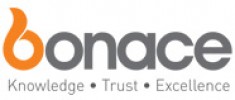
Bonace Engineers
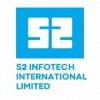
S2 Infotech

US Tech Solutions
- Home >
- Interviews >
- Aarvi Encon Interview Questions
